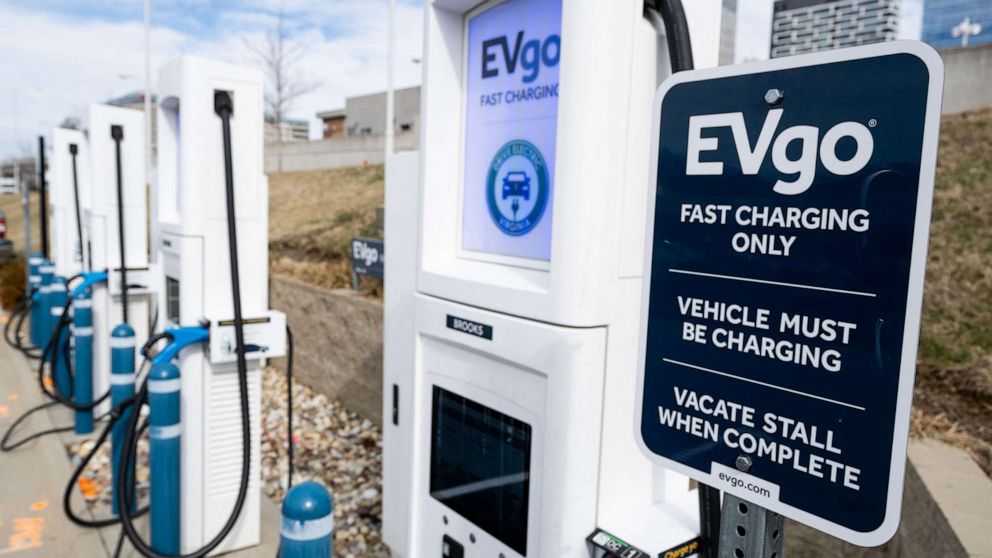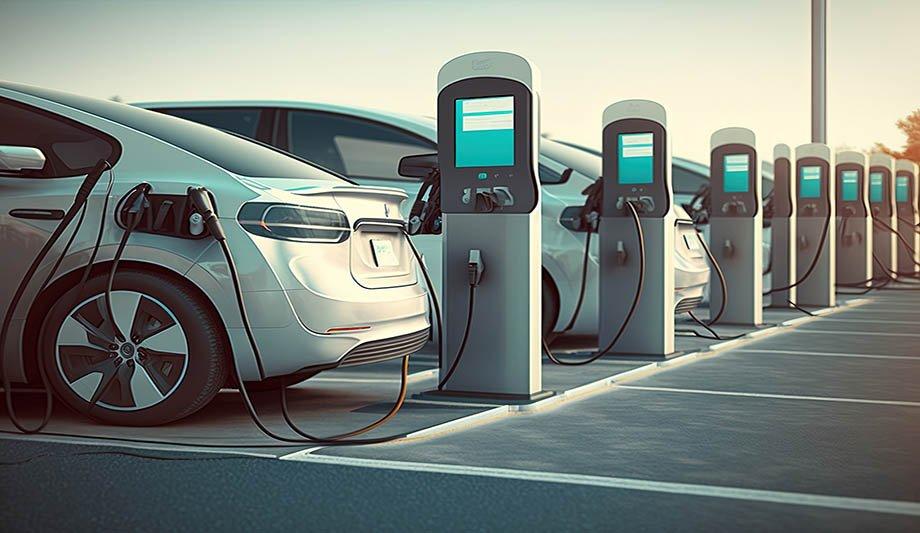Leading EV Charging News: Trick Updates on Framework and Development

Recent Improvements in Fast-Charging Innovation

Moreover, innovations in battery modern technology, including boosted thermal administration systems and higher power thickness batteries, enhance fast-charging capacities. These advancements mitigate the danger of battery deterioration throughout quick charging, ensuring long life and performance for EV owners.
In addition, the assimilation of wise charging remedies is improving customer experience, enabling real-time surveillance and dynamic rates versions. EV Charging news. This flexibility allows motorists to maximize charging expenses and times based on grid need
As car manufacturers proceed to buy fast-charging networks, the collaboration between market stakeholders is vital. Collaborations between charging station carriers and automobile suppliers are leading the means for considerable insurance coverage, ultimately cultivating a more robust EV environment. These improvements are crucial in sustaining the change to lasting transportation.
Federal Government Efforts for Charging Development
Government efforts play a critical role in the development of electric automobile (EV) charging infrastructure, helping with the shift to lasting transport. Numerous federal and state programs are being executed to enhance billing accessibility, lower the monetary burden on customers, and advertise the fostering of electrical cars.
Notably, the U.S. government has actually assigned significant financing via the Infrastructure Investment and Jobs Act, which sets aside $7.5 billion for EV charging network advancement across the country. This financing is aimed at releasing hundreds of brand-new charging stations, especially in underserved areas, therefore dealing with range stress and anxiety amongst possible EV purchasers.
Furthermore, countless states are passing legislation to streamline the permitting procedure for charging station installments, which is crucial for increasing implementation. Incentives such as tax obligation credit scores and rebates for both consumers and organizations are also being presented to encourage the installment of billing infrastructure.
In addition, public-private collaborations are progressively becoming an emphasis, leveraging exclusive investment to enhance federal government funding. These campaigns emphasize a collaborative strategy vital for constructing a comprehensive and effective EV billing network, ultimately adding to a greener and even more lasting future.
Cutting-edge Battery Solutions Enhancing Effectiveness
Reinventing the landscape of electrical automobile (EV) technology, cutting-edge battery solutions are dramatically enhancing effectiveness and efficiency. Advances in battery chemistry, specifically with lithium-sulfur and solid-state batteries, are causing raised energy thickness, which enables longer varieties and faster billing times. These new battery kinds have the potential to surpass conventional lithium-ion batteries by providing greater abilities while decreasing weight, therefore boosting general automobile effectiveness.
Additionally, growths in battery administration systems (BMS) are maximizing energy usage and extending battery life-span. Smart algorithms keep track of battery wellness and performance, making it possible for real-time modifications to charging and discharging procedures. This not just improves the performance of the battery yet additionally makes certain an extra trustworthy and sustainable power source for EVs.
In addition, the integration of reusing technologies is addressing the environmental influence of battery manufacturing and disposal. Developments in second-life applications for EV batteries are promoting their use in energy storage systems, adding to a circular economy.
As these ingenious battery solutions remain to advance, they guarantee to change the EV market, making electrical automobiles a lot more obtainable and appealing to a more comprehensive audience while sustaining worldwide sustainability objectives.

Cooperation Between Automakers and Billing Networks
Identifying the crucial demand for a durable billing infrastructure, car manufacturers are increasingly working together with charging network companies to enhance the EV ownership experience (EV Charging news). These collaborations aim to produce a smooth charging environment that benefits customers and sustains the transition to electrical lorries
Significant automotive brands are joining pressures with recognized billing networks to broaden their charging terminal insurance coverage, making sure vehicle drivers have accessibility to convenient and trusted billing options. For example, partnerships with networks like ChargePoint and Electrify America enable automakers to integrate charging remedies straight into their automobiles' navigating systems, guiding users to the nearby stations and supplying real-time accessibility updates.
Moreover, these cooperations often lead to the development of fast-charging technologies that website here substantially lower the time needed to charge an EV. By merging resources and proficiency, car manufacturers and charging networks can innovate much faster, developing solutions that meet the growing demand for electric movement.
In addition, joint efforts may likewise result in more standardized charging procedures, which can ease consumer complication and advertise wider EV fostering. Overall, these strategic alliances are critical in constructing a easy to use and reliable charging facilities that satisfies the requirements of an increasing electric lorry market.
Obstacles Facing EV Charging Framework
As the electric car market continues to expand, several challenges are surfacing that impede the development of a comprehensive charging infrastructure. One of the key obstacles is the inadequate number of charging terminals, specifically in rural and underserved metropolitan locations. This gap develops array stress and anxiety among possible EV buyers, discouraging them from making the switch.
In addition, the lack of standardization accountable modern technology complicates the framework landscape. Variants in plug types and billing rates can create complication for customers and enhance operational complexities for billing network drivers. Furthermore, the assimilation of billing stations right into existing electrical grids positions significant challenges. Several regions face capacity constraints, needing substantial financial investments in grid upgrades to fit increased need.
An additional pushing concern is the high expense related to the installment and upkeep of billing terminals, which can be a barrier for both public entities and personal businesses. Regulatory obstacles and zoning restrictions can delay the release of charging framework, impeding progression in broadening crucial services. Attending to these obstacles will be crucial for cultivating a durable EV community that supports the change to lasting transport.
Verdict
To conclude, the recurring advancements in EV charging technology, supported by substantial government efforts and cutting-edge battery solutions, are essential for the growth and effectiveness of electrical lorry framework. Collaborations between car manufacturers and billing providers even more enhance station insurance coverage, dealing with the growing need for obtainable charging choices. In spite of obstacles that persist within the EV billing landscape, these growths represent a positive YOURURL.com trajectory in the direction of a much more efficient and lasting electrical automobile community.
Advancements in billing facilities have led to the development of ultra-fast battery chargers qualified of supplying up to 350 kW of power, considerably reducing charging times. Variants in plug kinds and charging rates can develop confusion for site users and increase operational intricacies for charging network drivers.In final thought, the ongoing developments in EV charging innovation, supported by considerable federal government campaigns and ingenious battery remedies, are crucial for the development and performance of electrical vehicle facilities. Cooperations in between automakers and charging suppliers better improve station protection, addressing the expanding demand for accessible billing alternatives. Regardless of difficulties that linger within the EV charging landscape, these developments signify a favorable trajectory in the direction of a much more efficient and sustainable electrical car community.